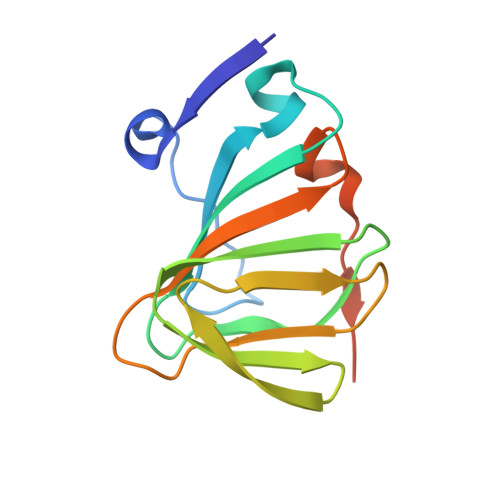DMSOP-cleaving enzymes are diverse and widely distributed in marine microorganisms.
Carrion, O., Li, C.Y., Peng, M., Wang, J., Pohnert, G., Azizah, M., Zhu, X.Y., Curson, A.R.J., Wang, Q., Walsham, K.S., Zhang, X.H., Monaco, S., Harvey, J.M., Chen, X.L., Gao, C., Wang, N., Wang, X.J., Wang, P., Giovanonni, S.J., Lee, C.P., Suffridge, C.P., Zhang, Y., Luo, Z., Wang, D., Todd, J.D., Zhang, Y.Z.(2023) Nat Microbiol 8: 2326-2337
- PubMed: 38030907
- DOI: https://doi.org/10.1038/s41564-023-01526-4
- Primary Citation of Related Structures:
8HLE, 8HLF - PubMed Abstract:
Dimethylsulfoxonium propionate (DMSOP) is a recently identified and abundant marine organosulfur compound with roles in oxidative stress protection, global carbon and sulfur cycling and, as shown here, potentially in osmotolerance. Microbial DMSOP cleavage yields dimethyl sulfoxide, a ubiquitous marine metabolite, and acrylate, but the enzymes responsible, and their environmental importance, were unknown. Here we report DMSOP cleavage mechanisms in diverse heterotrophic bacteria, fungi and phototrophic algae not previously known to have this activity, and highlight the unappreciated importance of this process in marine sediment environments. These diverse organisms, including Roseobacter, SAR11 bacteria and Emiliania huxleyi, utilized their dimethylsulfoniopropionate lyase 'Ddd' or 'Alma' enzymes to cleave DMSOP via similar catalytic mechanisms to those for dimethylsulfoniopropionate. Given the annual teragram predictions for DMSOP production and its prevalence in marine sediments, our results highlight that DMSOP cleavage is likely a globally significant process influencing carbon and sulfur fluxes and ecological interactions.
Organizational Affiliation:
MOE Key Laboratory of Evolution and Marine Biodiversity, Frontiers Science Center for Deep Ocean Multispheres and Earth System & College of Marine Life Sciences, Ocean University of China, Qingdao, China. O.Carrion-Fonseca@uea.ac.uk.
















